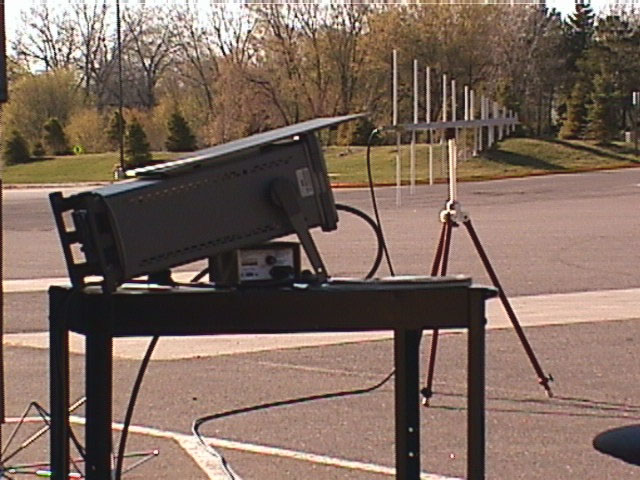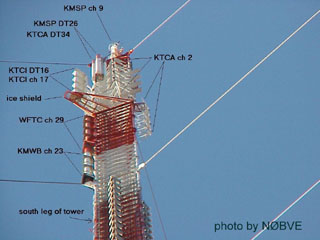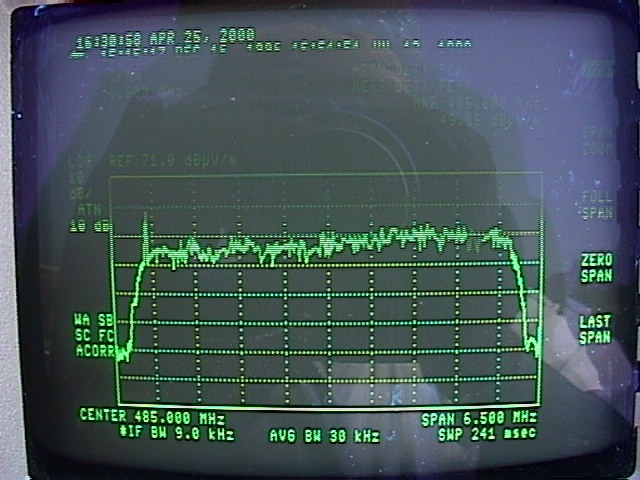
KTCI DT channel 16, horizontal antenna
polarization.
This looks similar to vestigial sideband (VSB) used in standard tv
broadcasting.
A pilot signal is visible as the spike on the left-hand side of the
signal.
Other than that, I see no discernible signals buried in it like with
analog
tv. This is the 8VSB digital tv standard.
More on the pilot signal... This is
the location of the original AM carrier signal used to generate the
modulated
data you see in the 6 MHz bandwidth above. The AM carrier is
filtered
out (along with the lower sideband) and the pilot signal is added in
it's
place (at a much lower power level than the AM carrier would have
been).
I imagine this is done to conserve transmitter power, since an AM video
carrier signal usually encompasses about 25% of power contained within
the picture component of a broadcast tv signal - a waste of energy
since
it contains little information! The low amplitude of the pilot
signal
in the 8VSB signal shows that the ATSC was thinking clearly when they
agreed
upon the 8VSB standard. It is aparently very efficient with it's
use of transmitter power!
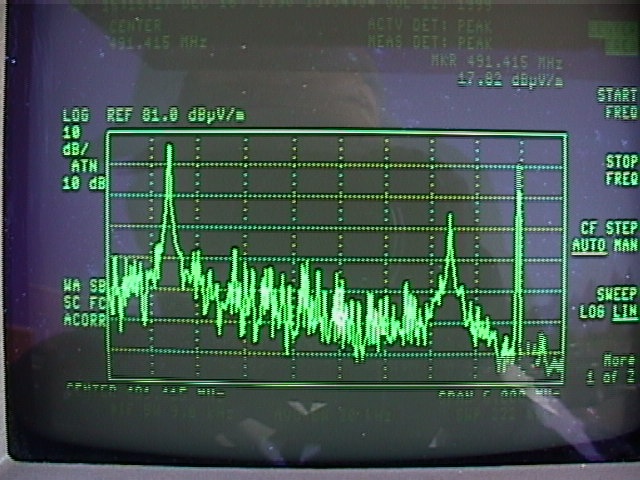
For comparison, here is KCTI analog
channel
17, horizontal antenna polarization. You can clearly see the AM
video
carrier signal at the left, the FM audio signal at the right and the
color
sub carrier in the middle right. Notice how the AM carrier is
huge
in comparison with the tv picture information, the FM audio and the
color
sub carrier. If you measured it, the video carrier would be about
25% of the power contained in this signal!
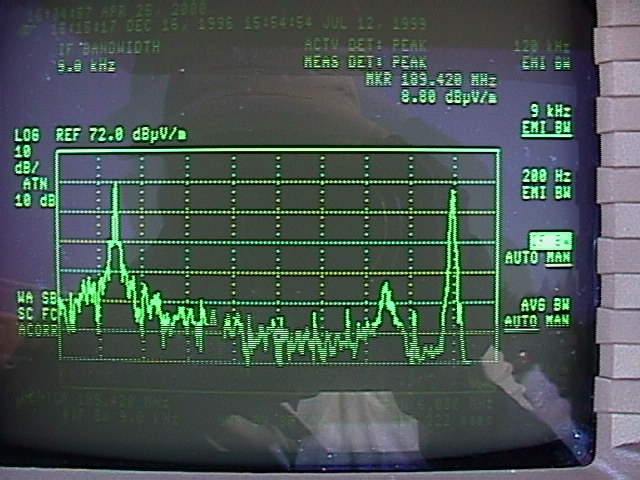
Also for comparison, here is KMSP
analog
channel 9, horizontal antenna polarization. Again, you can
clearly
see the AM video carrier signal at the left, the FM audio signal at the
right and the color sub carrier in the middle right. FYI:
With
channel 9 being below the theoretical match frequency of the log
periodic
antenna, I should have changed to a biconical antenna to take an
accurate
reading. In the interest of time, I didn't bother.
LINKS TO OTHER TV DX PAGES:
Jeff
Kadet's TV DX Photos (HDTV also!)
You can e-mail me at:
![]()
